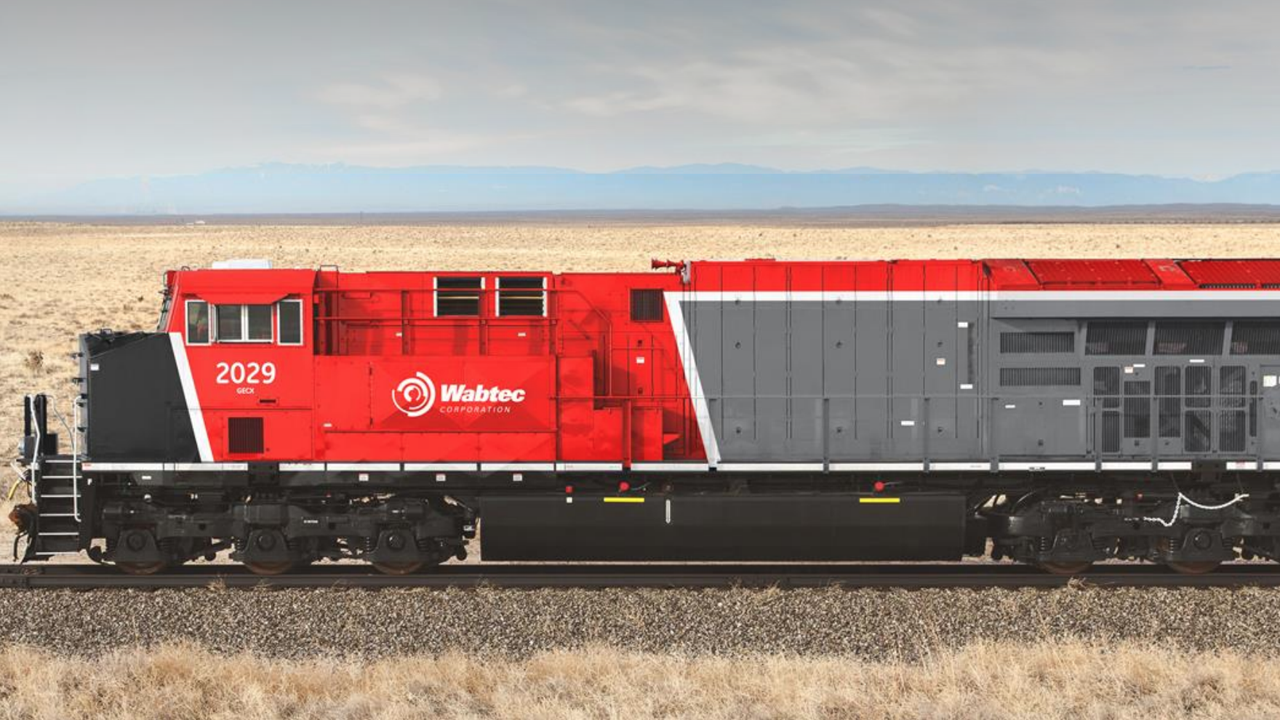
SIG Insight on Wabtec, CARB From REF 2024 Locomotive Day
Written by Marybeth Luczak, Executive Editor
(Wabtec Photograph)
Conversations during “Locomotive Day” at the Rail Equipment Finance Conference 2024 (REF), held March 3-6 in La Quinta, Calif., “support a low-risk/high-certainty railcar cycle ramp over the next 5-10 years from replacement alone, with meaningful upside risk from regulatory change,” reported Bascome Majors, Senior Equity Research Analyst-Industrials at Susquehanna International Group (SIG), on March 7.
“Wabtec’s lock on North American high-horsepower locomotive manufacturing and servicing makes them the primary investable beneficiary,” he noted.
Following are Majors’ condensed takeaways from “Locomotive Day,” which he published as part of a SIG report:
- A gradual backlog build for Wabtec in North America “feels well-supported.” According to Majors, “[r]egulatory and technological uncertainty in freight railroad locomotive propulsion continue to delay next-generation investment from Class I railroads.” As such, he reported, SIG believes “the incrementally fuel-efficient (and capital-efficient) solution of rebuilding approximately 20-year-old diesel-powered locomotives to add another 10-15 years of useful life has a long runway ahead, and our contacts expect to see more announcements of orders that gradually expand and extend Wabtec’s diesel locomotive backlog in 2024 (both new and modified).” Wabtec, Majors said, continues to have “a lock on both the healthy high-horsepower rebuild market and gradually improving Tier 4 newbuild market in North America, and nobody we spoke to saw that changing in diesel’s long twilight for freight rail (at least 10-15 more years).”
- Class I’s “leaning hard on alternative diesel fuels to hit 2030 emissions targets.” The path to railroads achieving emission reduction targets, Majors reported, “is completely contingent on their locomotive investment strategy,” and SIG contacts “believe the railroads continue to play a long ‘wait and see game’ before committing to next-generation locomotive investment strategies.” He pointed out that locomotive OEMs (original equipment manufacturers) and industry experts “believe the timeline for deciding on and beginning to invest in next generation (i.e., post diesel) locomotive propulsion in any meaningful scale remains at least 10-15 years, with hydrogen in the lead for Class I main line power and battery-electric viable in limited applications (switchers, closed loop mining).” According to Majors, diesel-driven locomotives “remain the near- and mid-term focus for rail capex, leaving the Class I railroads heavily reliant on biodiesel or renewable diesel to hit self-set 2030 emissions targets, and dependent on Wabtec’s diesel-powered locomotive products and upgrades.” However, railroads are “at the mercy of the aviation industry in competing for feedstock and fuels, with airlines more significant polluters with fewer emissions reductions alternatives compared to freight rail,” he noted. “Against the backdrop of competition for alternative diesel fuels, our contacts remain skeptical that railroads will hit their emissions targets by 2030.”
- “CARB counting: upside risk for locomotive suppliers, but will take time to gain regulatory certainty.” At “Locomotive Day,” SIG spoke with many people about CARB and other potential “regulatory accelerants” to the North American locomotive upgrade cycle, according to Majors, but there was “no consensus on when and what would eventually survive the gauntlet of regulatory and court challenges.” There was, however, “strong consensus” on two points, he reported: “1) those challenges will take time (more likely years than months), and we shouldn’t expect the Class I’s to make major moves without exhausting every avenue to shape these regulations,” and “2) these remain a significant upside risk for Wabtec, regardless of underlying rail volume growth, especially as replacement needs for locomotive aging alone become more urgent into the late 2020s and early 2030s.”
Further Reading:
- REF Locomotive Day Takeaways From TD Cowen
- SIG Takeaways From REF 2024
- REF 2024: Rail Equipment Close to Equilibrium; Structural Shifts May Emerge



